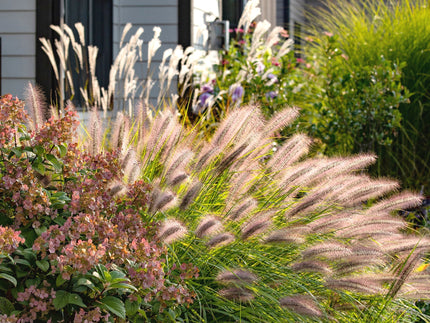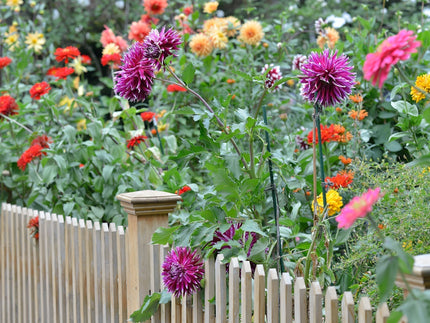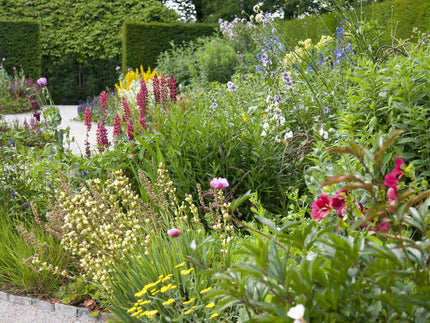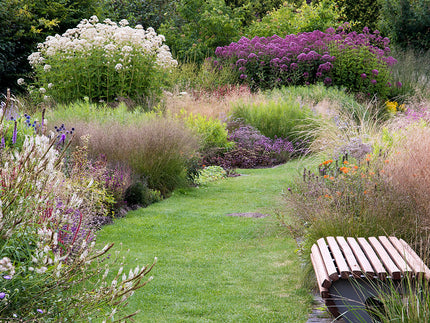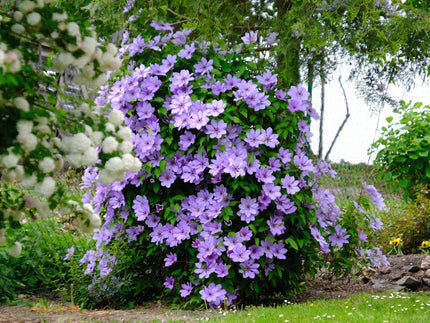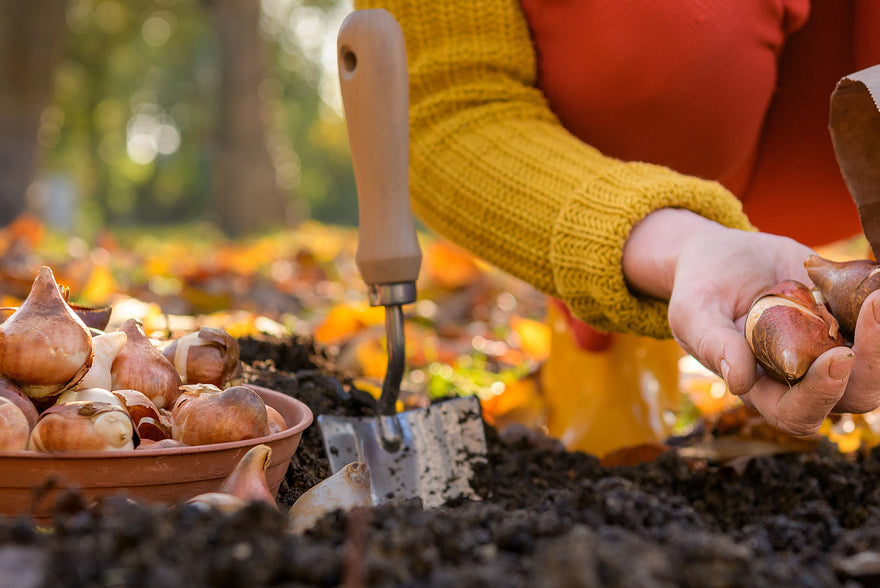
Why spring bulbs must be planted in autumn
As the crisp air of autumn settles in and leaves turn vibrant shades of amber and crimson, gardeners everywhere begin to prepare for the upcoming months. One of the most important tasks during this season is planting spring bulbs. Contrary to common belief, these bulbs must be planted in autumn to ensure a magnificent display of colour when spring arrives. Let's delve into the reasons behind this vital gardening practice and explore how you can achieve the best results.
The science behind bulb planting
To understand why spring bulbs must be planted in autumn, it is essential to grasp the science behind their growth. Bulbs such as tulips, daffodils, crocuses, and hyacinths require a period of cold dormancy to break their dormant state and stimulate root development. This cold period enables the bulbs to develop the necessary energy and nutrients for their springtime bloom.
When bulbs are planted in autumn, typically between September and December, they have ample time to establish their root systems before the ground freezes. This process is crucial as it ensures the bulbs can absorb water and nutrients from the soil, which will fuel their growth during the warmer months.

The ideal planting conditions
Autumn offers the perfect environment for planting spring bulbs due to several favourable factors. Understanding these conditions can help ensure the success of your spring blooms.
-
Cooler soil temperatures
One of the primary reasons bulbs are planted in autumn is the cooler soil temperatures, which hover around 10-15°C. This range is optimal for root development but cool enough to prevent premature growth. Planting in too warm soil can cause the bulbs to rot or produce weak, spindly roots, which will not sustain the plant through winter.
-
Adequate moisture levels
Autumn often brings more consistent rainfall, providing the moist conditions that bulbs need to initiate growth. This natural watering reduces the need for supplementary irrigation, helping you save on water costs and time. Ensuring that bulbs have sufficient moisture is key to promoting healthy root establishment.
-
Reduced pest activity
As temperatures drop, many garden pests either die off or go dormant, reducing the risk of bulb damage. This makes autumn a safer time for planting compared to summer or spring when pests are more active. Critters like squirrels and voles are less likely to disturb your newly planted bulbs during autumn, improving their chances for healthy growth.

Choosing the right bulbs for autumn planting
To achieve a vibrant spring garden, it is essential to choose the right bulbs suitable for autumn planting. Here are some popular options to consider:
-
Tulips
Tulips are a favourite among gardeners due to their striking colours and varied forms. They require well-draining soil and a sunny location to thrive. Late autumn is ideal for planting tulip bulbs, as it allows them to experience the necessary cold period for optimal blooming in spring.
-
Daffodils
Known for their cheerful yellow flowers, daffodils are reliable and easy to grow. They are also deer-resistant, making them an excellent choice for gardens in areas with high deer activity. Plant daffodil bulbs in a location that receives at least six hours of sunlight a day for the best results.
-
Crocuses
Crocuses are often the first to bloom in early spring, heralding the end of winter. These tiny, colourful flowers do best in well-draining soil and can be planted in both full sun and partial shade. Since crocuses are small, plant them in groups to create a more impactful display.
-
Hyacinths
Hyacinths are loved for their intensely fragrant flowers and come in a broad spectrum of colours. They prefer well-draining, fertile soil and a sunny spot in the garden. Hyacinths also benefit from being planted in clusters, allowing their vibrant blooms to create a dramatic impact in your spring garden.

How to plant bulbs in autumn
Now that you understand the importance of planting spring bulbs in autumn and have selected your bulbs, it’s time to get planting. Follow these steps for successful planting:
-
Prepare the soil
Start by selecting a suitable location in your garden. Ensure the soil is well-draining, as bulbs are prone to rot in waterlogged conditions. If your soil is heavy clay, consider amending it with organic matter or sand to improve drainage. Use a garden fork or tiller to loosen the soil to a depth of about 20cm.
-
Digging the holes
The general rule for planting bulbs is to dig a hole that is three times deeper than the bulb’s height. For instance, a bulb that is 5cm tall should be planted 15cm deep. For larger bulbs like tulips or daffodils, aim for a depth of about 20cm.
-
Placement
Place the bulbs in the hole with the pointed end facing upwards. Space them according to the specific recommendations for each type of bulb, typically around 10-15cm apart for large bulbs like tulips and daffodils, and 5-7cm apart for smaller bulbs like crocuses.
-
Backfill the hole
Gently backfill the hole with soil, ensuring that the bulbs are securely covered. Lightly tamp the soil to eliminate air pockets, which can hinder root development. Avoid compacting the soil too much, as this can restrict growth.
-
Mulching
Apply a layer of mulch, such as shredded leaves or bark, to a depth of about 5cm. Mulching helps to retain soil moisture, suppress weeds, and provide additional insulation against winter cold.
-
Watering
Water the bulbs thoroughly right after planting. This helps to settle the soil and initiate root growth. In the absence of regular rainfall, continue to water the bulbs throughout autumn to ensure they remain hydrated.

Benefits of autumn planting
Planting spring bulbs in autumn comes with an array of benefits that go beyond just ensuring beautiful blooms.
-
Maximising bloom potential
Plants that have had a sufficient cold period and robust root development will produce larger, more vibrant flowers. This ensures your spring garden is awash with colour and life, giving you a more satisfying and visually appealing display.
-
Ensuring longevity
Bulbs that are properly planted in autumn tend to have a longer and healthier life cycle. They establish stronger roots, making them more resilient against diseases and pests. This not only ensures a stunning spring display but also contributes to the longevity of your garden.
-
Less maintenance in spring
Once autumn planting is done, your work is mostly complete. By the time spring arrives, you won't need to do much more than enjoy the blooming flowers. This reduces your gardening workload during the busy spring season, allowing you to focus on other gardening tasks or simply enjoy your garden.
-
Better use of growing season
Planting in autumn allows the bulbs to get a head start on their growth cycle. This means they are already well-established when the growing season starts, leading to an earlier and more robust bloom compared to bulbs planted in spring.

Conclusion
Planting spring bulbs in autumn is a vital practice for any gardener aiming to achieve a vibrant and healthy spring garden. The cooler soil temperatures, adequate moisture levels, and reduced pest activity make autumn the ideal time for planting. By selecting the right bulbs and following proper planting techniques, you can ensure that your garden bursts into life with an array of stunning colours and fragrances as soon as spring arrives.
The benefits of autumn planting go beyond just aesthetic appeal. You’ll enjoy longer-lasting blooms, healthier plants, and a garden that requires less maintenance in the spring. Not to mention, the sheer joy of witnessing your hard work from autumn pay off in the form of beautiful spring flowers is truly rewarding.
So, as the leaves begin to fall and the nights grow longer, take advantage of this season to plant your spring bulbs. Your future springtime self will thank you for the foresight and effort, as you bask in the beauty of a garden that wakes up from winter with a burst of colour and life.
By adhering to these guidelines and leveraging the optimal conditions offered by autumn, your spring bulbs will thrive, offering a spectacular floral display that heralds the arrival of warmer days. With just a little planning and effort in autumn, you’ll set the stage for a delightfully colourful and fragrant spring garden. Each bulb you plant in autumn is a promise of the beauty and renewal to come, making the cold, grey days of winter well worth the anticipation.

































































































































































































